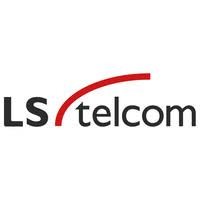-
StatusCompleted
-
Status date2022-10-11
-
Activity Code1D.017
Radio spectrum is a finite natural resource, and as such, the most efficient possible use must be made of it for the benefit of all. Despite there being longstanding frequency allocations for satellite services, there is growing pressure on these designations from other commercial and regulatory groups as they lobby for spectrum to support the introduction new services and applications. It is therefore necessary to continuously monitor and lobby the frequency coordination community on behalf of the satellite communications sector to protect existing services and enable new applications to develop. Only by establishing and advocating positions based on a broad industry consensus, demonstrating the widespread benefits of satellite communications, and providing rigorous technical analysis, will the satellite sector be successful in ensuring favourable future access to adequate frequency spectrum.
The project considered the various agenda items (AI) for the ITU World Radiocommunication Conference (WRC) in 2019 and identified those which had the largest potential impact on ARTES activities. Each identified AI was monitored, and supporting studies were prepared to assist with the determination of the likely impact (whether negative or positive). The project developed an approach that supported the satellite perspective for all identified agenda items and work items.
Following completion of WRC-19 the project continued to provide expert analysis and support to ESA to assess any changes which resulted from the decisions taken. In addition, following a similar assessment of the proposed AI for WRC-23, work was conducted to determine how these may affect ARTES activities and whether, and to what extent, there was a need for industry support by ESA.
To deliver these results, the project established an agile framework in which small technical and non-technical tasks could be quickly initiated and executed to support regulatory issues.
Some industries have large budgets relating to their activities at WRC and making the satellite voice heard can be difficult. The project kept detailed track of the on-going discussions in the relevant regulatory fora including ITU Working Parties and ECC/CEPT Working Groups. In case immediate threats were noted, contributions to relevant meetings and fora were prepared and accompanied by their technical justifications.
Due to travel restrictions, preparatory discussions for WRC-2023 have been less productive.
The main benefits of this activity were to ensure that any radio spectrum related decisions being taken at an international level, which may affect ARTES activities, were tracked and where appropriate, to ensure that the satellite perspective was understood and fed into any appropriate working groups.
The project has supported a number of smaller regulatory tasks (certification issues, filings analysis, market access information) which could also result in new activities with ARTES. Through the sub-tasks in this project a wide range of technical and regulatory experts have been engaged, providing ESA with evidence upon which to base contributions.
The activity increased the awareness regarding the spectrum issues which were at stake for ARTES stakeholders, including National Delegates. The outcomes of the activity influenced discussions in radio regulatory fora and provided recommendations for enabling the systems which could emerge if new satellite spectrum is allocated.
The main product of this project was a set of technical papers reporting the results of the various tasks undertaken as part of the Study, and an increased awareness of the importance of spectrum access in order to realise new satellite systems and services.
The project is now complete.



